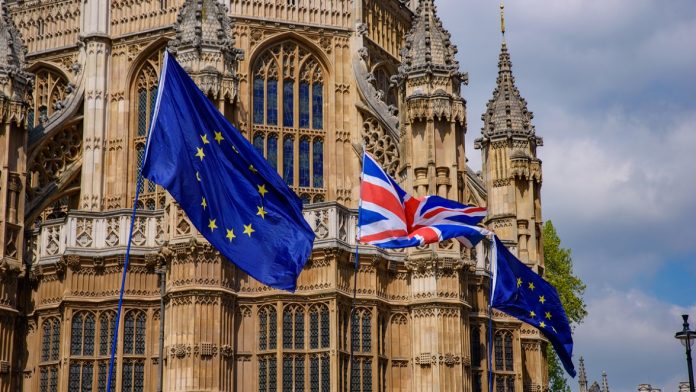The pound fell versus the euro for the fourth straight week. The pair tumbled 0.4% across last week, and 2.7% across the month of May. The pound was trading slightly higher in early trade on Monday, back above €1.1300 after dropping to a low of €1.1265 in the previous week.
| What do these figures mean? |
|---|
| When measuring the value of a pair of currencies, one set equals 1 unit and the other shows the current equivalent. As the market moves, the amount will vary from minute to minute. If the euro amount increases in this pairing, it’s positive for the pound. Or, if you were looking at it the other way around:1 EUR = 0.87271 GBPIn this example, €1 is equivalent to approximately £0.87. This measures the euro’s worth versus the British pound. If the sterling number gets larger, it’s good news for the euro. |
Political uncertainty and Brexit concerns hit demand for the pound in May. UK Prime Minister Theresa May resigned, the Brexit Party outperformed all other UK parties in the European Parliamentary elections and Theresa May’s replacement looks increasingly likely to be a pro-Brexit candidate. Market participants are increasingly concerned that a no deal Brexit could be a real possibility once again. Economists have frequently said that a no deal Brexit would be the least favourable option for the UK economy and therefore the pound.
| Why is a “soft” Brexit better for sterling than a “hard” Brexit? |
|---|
| A soft Brexit implies anything less than UK’s complete withdrawal from the EU. For example, it could mean the UK retains some form of membership to the European Union single market in exchange for some free movement of people, i.e. immigration. This is considered more positive than a “hard” Brexit, which is a full severance from the EU. The reason “soft” is considered more pound-friendly is because the economic impact would be lower. If there is less negative impact on the economy, foreign investors will continue to invest in the UK. As investment requires local currency, this increased demand for the pound then boosts its value. |
Nationwide house price index results dented demand for the pound on Friday. House prices falling was just the latest sign of Brexit uncertainty hitting confidence and consumers willingness to purchase large items.
Today, pound traders will look towards UK manufacturing pmi. Analysts forecast that manufacturing activity declined again in May, down from 53.1 the previous month to 52.2. The slight loss of momentum in May indicates that Brexit continues to hamper economic activity. Investors will pay particular attention to Wednesday’s service sector pmi, given that the service sector accounts for over three quarters of economic activity in the UK.
Eurozone Inflation & Manufacturing To Hit Euro?
The euro remained relatively resilient against the pound even as concerns over the health of the eurozone economy are growing. Data showed that German inflation fell by more than expected, dropping from 2% to just 1.4% year on year. Analysts are also expecting eurozone inflation to drop to a sluggish 1.3%, well down for 1.7% in April. As inflation moves further away from the European Central Bank’s 2% target, policy makers will be less inclined to consider raising interest rates, potentially pushing the euro lower.
| Why do raised interest rates boost a currency’s value? |
|---|
| Interest rates are key to understanding exchange rate movements. Those who have large sums of money to invest want the highest return on their investments. Higher interest rate environments tend to offer higher yields. So, if the interest rate or at least the interest rate expectation of a country is relatively higher compared to another, then it attracts more foreign capital investment. Large corporations and investors need local currency to invest. More local currency used then boosts the demand of that currency, pushing the value higher. |
Today’s manufacturing pmi could send the euro on a weaker course. Analysts are expecting the manufacturing activity data to show that the sector contracted further in May. Confidence in the eurozone economy remains weak as data points to slowing growth. Slowing growth and weaker inflation is a negative combination for the euro.
This publication is provided for general information purposes only and is not intended to cover every aspect of the topics with which it deals. It is not intended to amount to advice on which you should rely. You must obtain professional or specialist advice before taking, or refraining from, any action on the basis of the content in this publication. The information in this publication does not constitute legal, tax or other professional advice from TransferWise Inc., Currency Live or its affiliates. Prior results do not guarantee a similar outcome. We make no representations, warranties or guarantees, whether express or implied, that the content in the publication is accurate, complete or up to date. Consult our risk warning page for more details.
This article was initially published on TransferWise.com from the same author. The content at Currency Live is the sole opinion of the authors and in no way reflects the views of TransferWise Inc.





